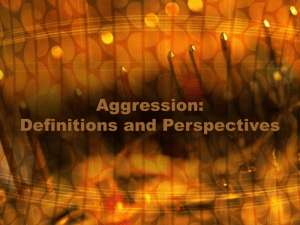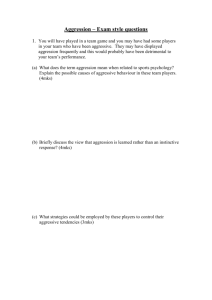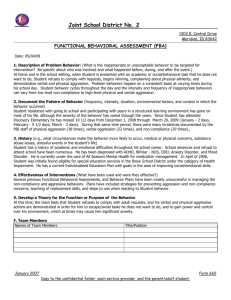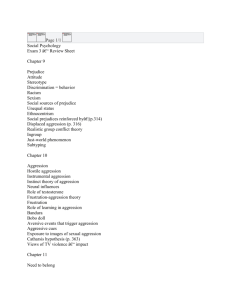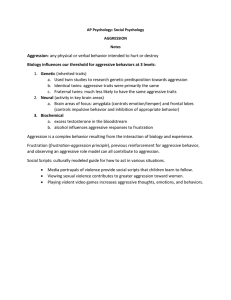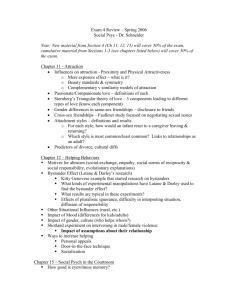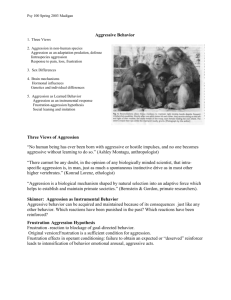P108 The Social Animal
advertisement
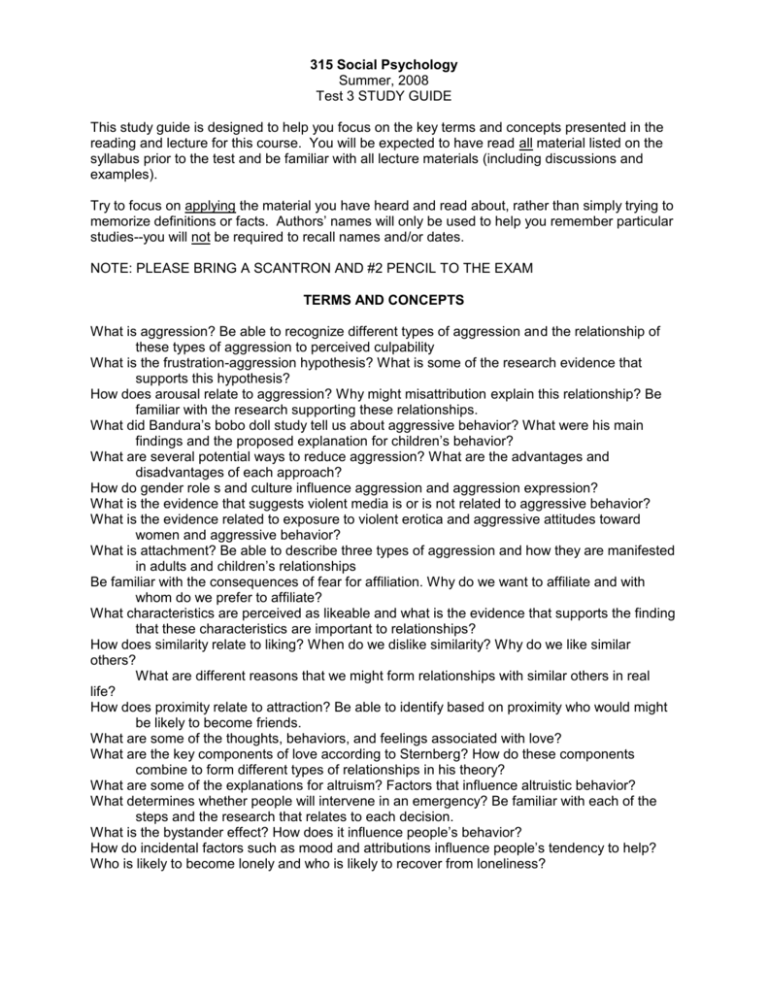
315 Social Psychology Summer, 2008 Test 3 STUDY GUIDE This study guide is designed to help you focus on the key terms and concepts presented in the reading and lecture for this course. You will be expected to have read all material listed on the syllabus prior to the test and be familiar with all lecture materials (including discussions and examples). Try to focus on applying the material you have heard and read about, rather than simply trying to memorize definitions or facts. Authors’ names will only be used to help you remember particular studies--you will not be required to recall names and/or dates. NOTE: PLEASE BRING A SCANTRON AND #2 PENCIL TO THE EXAM TERMS AND CONCEPTS What is aggression? Be able to recognize different types of aggression and the relationship of these types of aggression to perceived culpability What is the frustration-aggression hypothesis? What is some of the research evidence that supports this hypothesis? How does arousal relate to aggression? Why might misattribution explain this relationship? Be familiar with the research supporting these relationships. What did Bandura’s bobo doll study tell us about aggressive behavior? What were his main findings and the proposed explanation for children’s behavior? What are several potential ways to reduce aggression? What are the advantages and disadvantages of each approach? How do gender role s and culture influence aggression and aggression expression? What is the evidence that suggests violent media is or is not related to aggressive behavior? What is the evidence related to exposure to violent erotica and aggressive attitudes toward women and aggressive behavior? What is attachment? Be able to describe three types of aggression and how they are manifested in adults and children’s relationships Be familiar with the consequences of fear for affiliation. Why do we want to affiliate and with whom do we prefer to affiliate? What characteristics are perceived as likeable and what is the evidence that supports the finding that these characteristics are important to relationships? How does similarity relate to liking? When do we dislike similarity? Why do we like similar others? What are different reasons that we might form relationships with similar others in real life? How does proximity relate to attraction? Be able to identify based on proximity who would might be likely to become friends. What are some of the thoughts, behaviors, and feelings associated with love? What are the key components of love according to Sternberg? How do these components combine to form different types of relationships in his theory? What are some of the explanations for altruism? Factors that influence altruistic behavior? What determines whether people will intervene in an emergency? Be familiar with each of the steps and the research that relates to each decision. What is the bystander effect? How does it influence people’s behavior? How do incidental factors such as mood and attributions influence people’s tendency to help? Who is likely to become lonely and who is likely to recover from loneliness?



